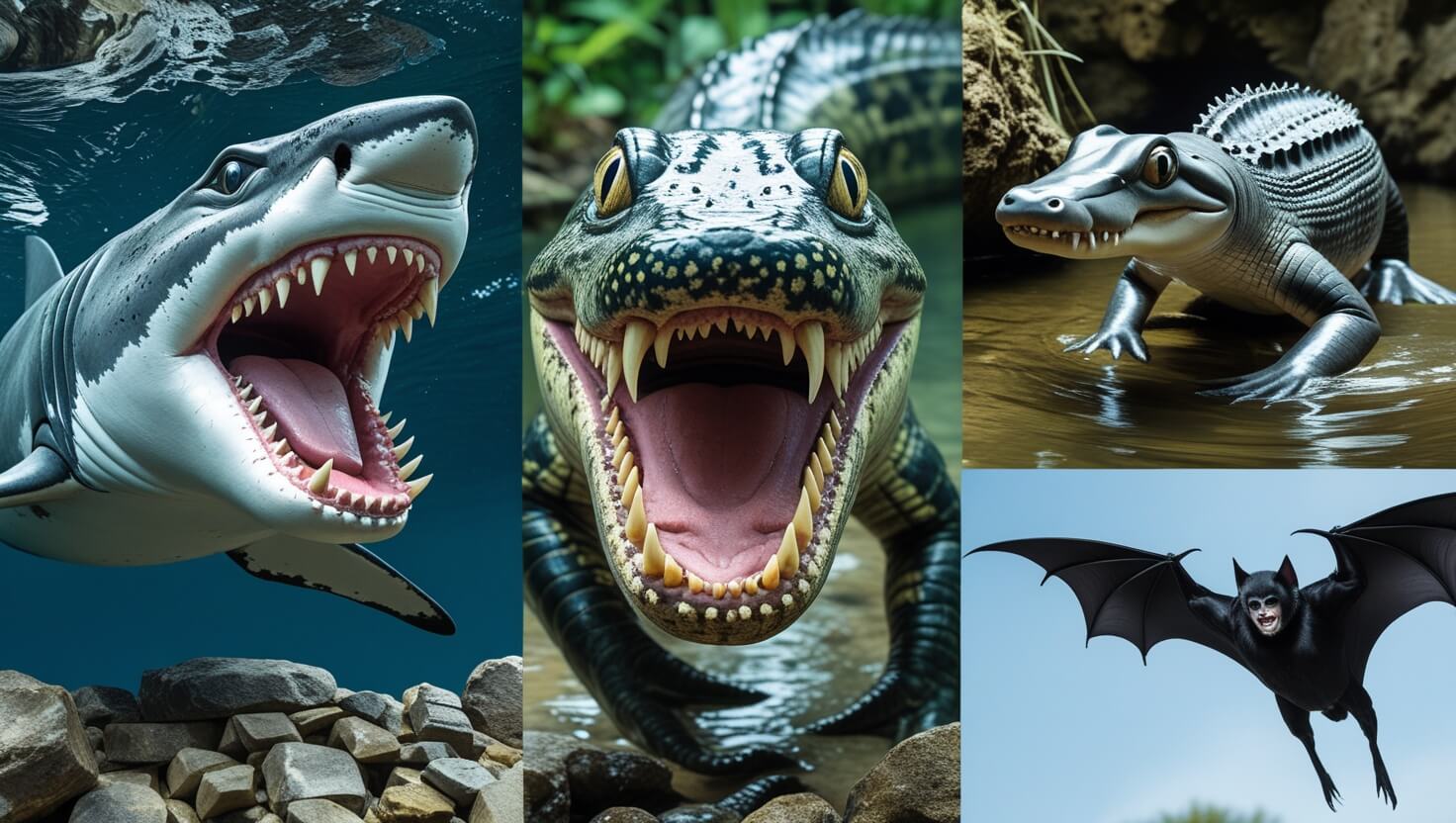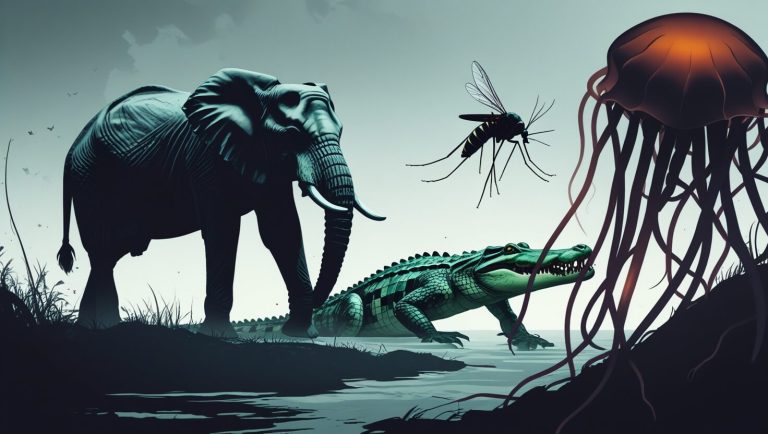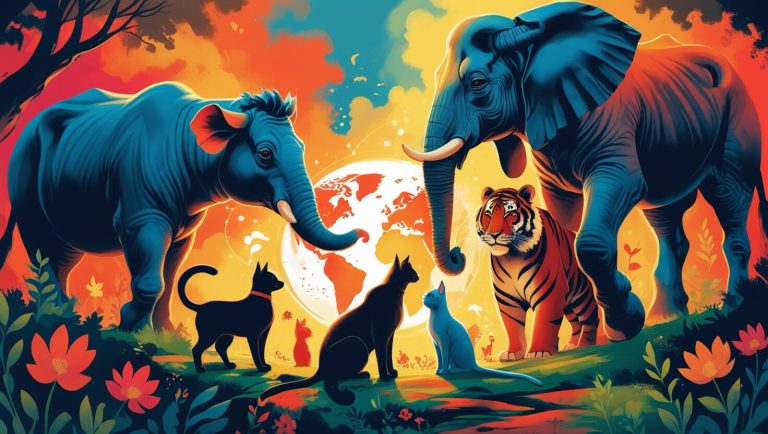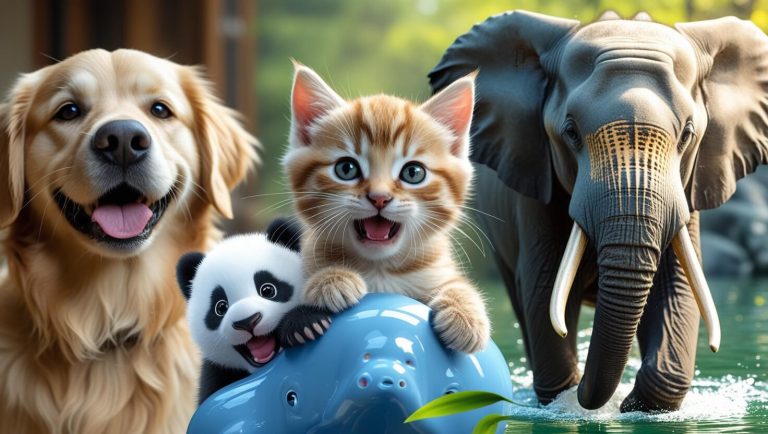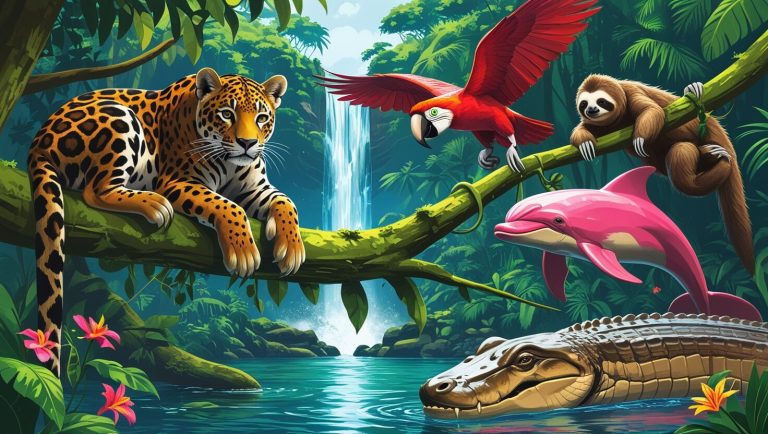Top 10 Animals With the Most Teeth in the World
When we think of animals with impressive teeth, we often picture a lion’s fangs or a crocodile’s snout. But what if we told you that the true champions of the tooth world are often much smaller, and sometimes, even snails?
That’s right! The animal kingdom is full of surprising dental record-holders. From the depths of the ocean to your own backyard, creatures have evolved thousands of teeth for all sorts of reasons—not just for biting.
Today, we’re counting down the top 10 animals with the most teeth. Get ready to be amazed by nature’s incredible and often weird designs!
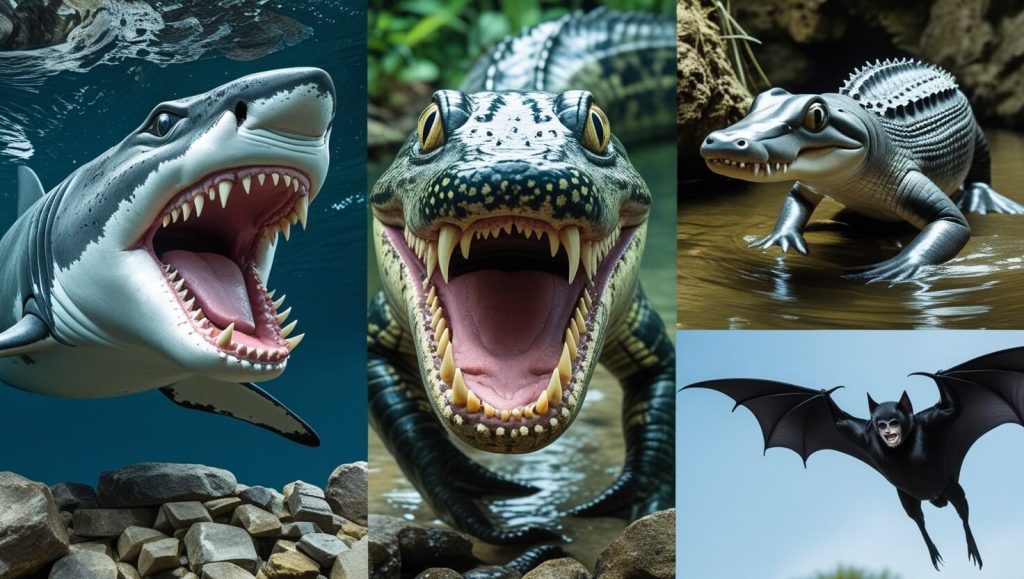
Why Do Animals Have So Many Teeth?
Before we start our list, let’s understand why. For many of these animals, their teeth aren’t for chewing like ours. They are specialized tools.
- Grasping and Holding: Some animals, like snakes, use many teeth to grip slippery prey.
- Grinding and Crushing: Animals that eat hard-shelled food, like snails or urchins, need hundreds of teeth to crush their meals into tiny pieces.
- Filter Feeding: Surprisingly, some animals use their tiny teeth like a sieve to filter food from water or mud.
- Rasping and Scraping: Creatures like slugs use their teeth-covered tongues to scrape away at food surfaces.
Now, let’s meet the champions!
Top 10 Animals With the Most Teeth
1. Snails:
The Toothiest Creatures on EarthWhen you think of animals with lots of teeth, snails might not come to mind, but these tiny creatures are the undisputed champions! A typical snail has a tongue-like structure called a radula, which is covered with thousands of microscopic teeth. Some species, like the common garden snail, can have up to 20,000 teeth or more!
- Why so many teeth? Snails use their radula to scrape food, like algae or plant matter, off surfaces. Their herbivore teeth are constantly worn down and replaced, ensuring they always have sharp tools for feeding.
- Fun Fact: The radula works like a conveyor belt, with new teeth forming at the back and moving forward as older ones wear out.
- Dental Structure: The radula is not like human teeth but consists of tiny, chitin-based teeth arranged in rows, perfect for their vegetarian diet.
Snails may be small, but their dental arsenal is a testament to nature’s creativity in designing animal teeth for specific tasks.
2. Sharks:
The Tooth-Regenerating PredatorsSharks are famous for their razor-sharp predator teeth, and for good reason—they can have thousands of teeth over their lifetime! While a shark might only have 50–300 teeth in its mouth at any given time, species like the great white or tiger shark continuously grow and shed teeth, producing up to 30,000 teeth in their lifetime.
- Why so many teeth? Sharks rely on their teeth to catch and tear apart prey, like fish or seals. Their teeth aren’t rooted like ours, so they fall out easily and are replaced by new ones in a conveyor-belt-like system.
- Fun Fact: Some sharks can lose and regrow a tooth every week, ensuring their dental structure is always ready for action.
- Unique Adaptations: Different shark species have teeth suited to their diet—pointy for gripping slippery fish or serrated for cutting through tough flesh.
Sharks’ endless supply of predator teeth makes them one of the ocean’s most formidable hunters.
3. Catfish:
Whiskered Wonders with Tiny TeethCatfish are another surprising entry on this list, with some species boasting over 9,000 teeth! These bottom-dwelling fish have rows of tiny, sandpaper-like teeth on their jaws and palate, used for grinding and scraping food.
- Why so many teeth? Catfish feed on a variety of foods, including algae, small fish, and organic debris. Their herbivore teeth (in some species) and omnivorous diet require a large number of teeth to process food effectively.
- Fun Fact: The teeth of a catfish are so small they feel like rough sandpaper rather than individual teeth.
- Dental Structure: Their teeth are arranged in dense patches, allowing them to scrape food off surfaces or crush small prey.
Catfish show how animal teeth can be small but mighty, perfectly adapted to their environment.
4. Alligators:
Reptilian ChompersAlligators are fearsome reptiles with powerful jaws and a surprising number of teeth—up to 3,000 over their lifetime. At any given time, an alligator’s mouth holds about 80 teeth, but like sharks, they continuously replace lost or damaged teeth.
- Why so many teeth? Alligators use their predator teeth to grab and crush prey, such as fish, birds, or mammals. Their teeth are conical and designed for gripping rather than chewing.
- Fun Fact: An alligator can go through 2,000–3,000 teeth in its lifetime, with new ones growing in as old ones wear out.
- Unique Adaptations: Alligator teeth are hollow at the base, allowing new teeth to grow inside old ones, ready to take their place.
The alligator’s dental structure ensures it remains a top predator in its watery habitat.
5. Opossums:
Mammals with a MouthfulOpossums, the only marsupials in North America, have an impressive 50 teeth—more than any other land mammal on this list. Their teeth are a mix of sharp incisors, canines, and molars, perfect for their omnivorous diet.
- Why so many teeth? Opossums eat everything from insects to fruits, so their animal teeth are designed for both tearing and grinding.
- Fun Fact: Opossums are known for “playing dead” as a defense mechanism, but their toothy grin can also scare off predators.
- Dental Structure: Their teeth include long canines for defense and molars for processing a wide range of foods.
Opossums prove that unique adaptations in teeth can make a small animal surprisingly versatile.
6. Giant Armadillo:
The Armored Tooth FactoryThe giant armadillo, a quirky mammal from South America, has an astonishing 80–100 teeth, the most of any land mammal. These teeth are small and peg-like, suited for their diet of termites and ants.
- Why so many teeth? Giant armadillos need numerous teeth to grind up tough insect exoskeletons. Their herbivore teeth (though they eat insects) are simple but effective.
- Fun Fact: Unlike most mammals, armadillo teeth lack enamel and are constantly growing to keep up with wear.
- Dental Structure: Their teeth are uniform and cylindrical, ideal for crushing rather than slicing.
The giant armadillo’s dental structure is a perfect example of how teeth evolve to match an animal’s diet.
7. Dolphins:
Smiling Swimmers with Plenty of TeethDolphins, the ocean’s playful mammals, can have 80–250 teeth, depending on the species. For example, the long-snouted spinner dolphin may have up to 250 conical teeth, while bottlenose dolphins typically have around 80–100.
- Why so many teeth? Dolphins use their predator teeth to catch fish and squid, gripping prey rather than chewing it.
- Fun Fact: Dolphin teeth are all the same shape (homodont), unlike human teeth, which vary in function.
- Unique Adaptations: Their streamlined teeth help them hold onto slippery prey in the water.
Dolphins’ toothy smiles are not just for show—they’re a key part of their hunting strategy.
8. Sea Urchins:
Spiky Eaters with a Unique ChewSea urchins might not look toothy, but they have a fascinating dental structure called Aristotle’s lantern, a five-toothed apparatus that can contain hundreds of tiny teeth over their lifetime. These teeth are used to scrape algae and other food off rocks.
- Why so many teeth? Sea urchins are grazers, and their herbivore teeth wear down quickly as they scrape hard surfaces, so they need constant replacements.
- Fun Fact: Aristotle’s lantern is named after the Greek philosopher who described its structure over 2,000 years ago.
- Unique Adaptations: The lantern is a complex, movable structure that allows precise scraping and grinding.
Sea urchins show how animal teeth can take on bizarre and effective forms.
9. Lampreys:
Jawless Fish with a Toothy TwistLampreys, ancient jawless fish, have a unique dental structure with hundreds of sharp, horn-like teeth arranged in circular rows inside their suction-cup-like mouths. While the exact number varies, some species can have over 100 teeth at a time.
- Why so many teeth? Lampreys are parasitic, using their predator teeth to latch onto fish and suck their blood or bodily fluids.
- Fun Fact: Lampreys lack true jaws, so their teeth are part of a specialized oral disc.
- Unique Adaptations: Their teeth are made of keratin, not bone, making them lightweight but sharp.
Lampreys’ creepy mouths make them one of nature’s most unusual toothy creatures.
10. Slugs:
Snail Cousins with a Toothy TongueLike their snail cousins, slugs have a radula packed with thousands of tiny teeth—sometimes up to 27,000 in certain species! These herbivore teeth help slugs scrape plant matter and other soft foods.
- Why so many teeth? Slugs feed on soft vegetation, and their radula’s teeth wear out quickly, requiring constant replacement.
- Fun Fact: Slugs can stretch their radula out of their mouth to reach food, like a tiny, toothy tongue.
- Dental Structure: Similar to snails, their teeth are microscopic and arranged in rows for efficient scraping.
Slugs round out our list with their surprising dental abundance, proving that even slimy creatures can pack a toothy punch.
Why Are Teeth So Important in the Animal Kingdom?
Teeth are more than just tools for eating—they’re a window into an animal’s lifestyle. Predator teeth are often sharp and designed for tearing, while herbivore teeth are built for grinding tough plant material. Some animals, like lampreys, use teeth for entirely different purposes, like clinging to prey. The unique adaptations in these animals’ dental structures show how evolution has fine-tuned their teeth to suit their environments and diets.
From the microscopic radula of snails to the regenerating teeth of sharks, the diversity of animal teeth is a testament to nature’s ingenuity. These creatures not only survive but thrive thanks to their remarkable dental systems.
Which animals have no teeth?
Several animals lack teeth entirely, relying on other adaptations for feeding. Here’s a concise list of notable toothless animals, incorporating secondary keywords like animal teeth, dental structure, and unique adaptations:
- Jellyfish: These marine creatures have no teeth or dental structure. They use their stinging tentacles to capture prey and a simple mouth opening to ingest food, relying on their digestive system to break it down.
- Sea Turtles: Most sea turtles lack animal teeth, using their sharp, beak-like mouths to tear plants or crush prey. Their unique adaptations include strong jaws suited for their diet (e.g., herbivorous green turtles have serrated beaks for plants, while leatherbacks have scissor-like jaws for jellyfish).
- Anteaters: These mammals have no teeth and use their long, sticky tongues to slurp up ants and termites. Their dental structure is absent, but their snout and tongue are perfect for their insectivorous diet.
- Baleen Whales: Species like blue whales and humpbacks have baleen plates instead of predator teeth. These plates filter small fish and krill from seawater, a unique adaptation for their massive feeding needs.
- Pangolins: These scaly mammals lack teeth, using their long tongues to eat ants and termites, similar to anteaters. Their stomachs grind food, compensating for the absence of animal teeth.
- Birds (Most Species): Birds generally lack teeth, using beaks and gizzards (a muscular stomach part) to process food. For example, herbivorous birds like parrots have strong beaks for cracking seeds, while carnivorous birds like eagles use sharp beaks as predator teeth equivalents.
- Echinoderms (e.g., Starfish): Starfish have no true teeth but use their mouth and stomach (which they can extend outward) to digest prey like mollusks. Their unique adaptations bypass the need for a traditional dental structure.
These animals show how evolution crafts diverse feeding mechanisms without relying on animal teeth, using beaks, tongues, baleen, or other unique adaptations instead. If you’d like more details on any of these or want to explore other toothless species, let me know!
Common Questions About Animals with the Most Teeth
Here are five commonly asked questions about animals with the most teeth,
u003cstrongu003eWhich animal has the most teeth in the world?u003c/strongu003e
Snails have the most teeth, with some species having up to 20,000 or more tiny teeth on their radula, a tongue-like structure used for scraping food.
u003cstrongu003eDo sharks really have thousands of teeth?u003c/strongu003e
Yes! Sharks can have up to 30,000 teeth in their lifetime because they constantly lose and regrow teeth, like a conveyor belt in their mouth.
u003cstrongu003eWhy do some animals need so many teeth?u003c/strongu003e
Animals like snails, sharks, and catfish have many teeth because their teeth wear out quickly from scraping, biting, or grinding tough food. Extra teeth ensure they can keep eating.
u003cstrongu003eAre all animal teeth like human teeth?u003c/strongu003e
No, animal teeth vary a lot. Some, like shark teeth, are sharp for cutting, while others, like snail teeth, are tiny and used for scraping. Each animal’s teeth are adapted to its diet and lifestyle.
u003cstrongu003eCan animals with lots of teeth lose them all?u003c/strongu003e
Most animals with many teeth, like sharks or alligators, don’t lose them all at once. They replace lost teeth with new ones, so they always have enough to eat or hunt.
Conclusion: A Toothy Adventure in Nature
The animal kingdom is full of surprises, and the sheer number of teeth some creatures possess is one of its wildest wonders. From the microscopic herbivore teeth of snails to the fearsome predator teeth of sharks, each animal on this list showcases unique adaptations that make their dental structure perfectly suited to their lifestyle. Whether they’re scraping algae, tearing through prey, or grinding tough insects, these animals prove that teeth are one of nature’s most versatile tools.
Next time you see a snail in your garden or watch a shark documentary, take a moment to appreciate their incredible animal teeth. They’re not just for eating—they’re a key part of what makes these creatures so fascinating. Got more questions about animal teeth or want to learn about other quirky adaptations? Drop a comment below, and let’s keep exploring the wild world of nature!
judi bola situs toto link slot situs toto link slot link slot monperatoto

Rony Junior is a lifelong animal lover who’s happiest with muddy paws on the couch and fur on their clothes. From curious cats to loyal dogs and everything in between, they write about the joy, challenges, and quirks of living alongside animals. When not blogging, you can find them at the local shelter, giving belly rubs and making new four-legged friends.

